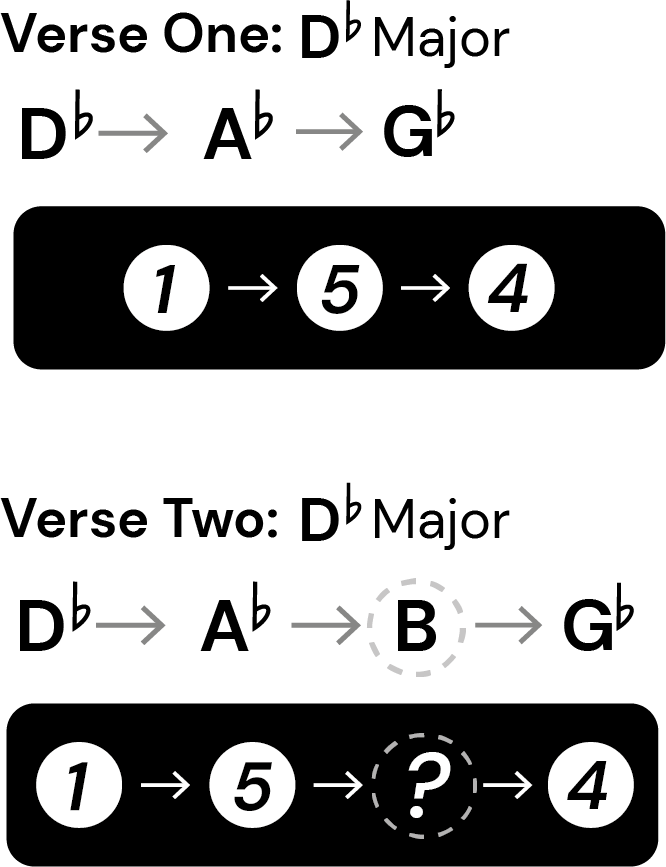If you're a guitar player looking to expand your musical horizons and enhance your understanding of harmony, the circle of fifths is a powerful tool that can transform your playing! Whether you're a beginner or an experienced guitarist, this musical concept can help you compose, improvise and understand chord progressions more effectively.
Understanding the Circle of Fifths:
The circle of fifths is a visual representation of the relationships between the twelve different musical keys. It's a circular diagram that starts with the key of C and moves clockwise through all the major keys and each key is separated by a perfect fifth. In the opposite direction, you'll find the relative minor keys, which are a minor third away from the corresponding major keys.
Click here to read our general blog post all about what the circle of fifths has to offer.

How to Use the Circle of Fifths as a Guitarist : A quick Rundown
Key Signature:
As mentioned above, the circle of fifths clearly displays the key signatures for each key. By examining the number of sharps or flats in a composition, musicians can quickly identify the key in which it is written. This is particularly helpful for performers, as it allows them to prepare for the specific scales and key-related elements they'll encounter in a piece.
Transposition:
Transposing a piece of music involves changing the key while maintaining its overall structure. The circle of fifths is immensely useful for this task. Musicians can simply move around the circle to find a new key, understanding the required sharps or flats and their positions. This is essential for accommodating different instruments or vocal ranges or adapting a piece to suit a particular performer's preference.
Imagine this! You are jamming with another musician, and suddenly they say “the verse is 1-4-5 in A”, you will know that it is A, D and E.
Scale Building:
The circle of fifths is a helpful tool for constructing scales. The major scale is the starting point for understanding every other type of scale. As a guitarist, scales are extremely useful because they form the foundation for your riffs, solos and melodies.
The major scale pattern goes as follows:

(W = Whole, H = Half)
The major scale contains 7 notes in an octave. The scales structure includes 5 whole tone intervals, and 2 semitone intervals per octave.
Example:

On a single string, the octave interval is always 12 frets away from the root, and the 5th interval is always 7 frets up the neck from the root.
Chords:
The circle of fifths is a goldmine for chords! You have major chords, minor chords, power chords and diminished chords.
Major Chords: Typically described as happy chords, a major triad is made up of the root, the 3rd and the 5th.
Minor Chords: These have a root, a minor third and a perfect fifth. Unlike major chords, minor chords are considered to sound ‘sad’.
Power Chords (a dyad): uses two notes only - the root and the 5th. They are movable, easy to play and can be substituted in place of major and minor chords to make hard chord progressions easier.
Diminished Chords: in a diminished triad the 3rd and 5th notes are flattened by one semitone, creating a dissonant sound.
Put simply, understanding chords and their location on the fretboard will eventually allow you to manipulate them, change them from major to minor and to other types of chords.
Example:
Here is an example of the E major open chord. The E note appears 3 times, the B twice, the G# once. This representation within the chord makes it feel ‘full’, providing a rich sound when the guitar is strummed.

Remember - we can make any major chord a minor chord by flattening the 3rd!
Composition:
Chord progressions:
The circle of fifths provides valuable insights into chord progressions within a given key. Musicians often refer to the primary chords in a key as the I, IV, and V chords. For example, in the key of C major, these chords would be C major (I), F major (IV), and G major (V). Understanding these relationships aids in composing and improvising chord progressions that sound harmonically pleasing.
Borrowed Chords:
Otherwise known as the secondary subdominant and secondary dominant. Borrowing chords are a fun way to spice up simple chord progressions.
Adding an accidental chord (such as B major) grabs the listeners attention. This is a way to make chord progressions fun and interesting without completely changing the key you are in.
Example:

In verse two, by adding the B (the secondary subdominant) although not technically in the key of D flat, it still works harmoniously. This graphic shows simply how you could introduce an accidental chord into your music whilst still making sure it sounds good together!
Modulation:
Modulation refers to a deliberate key change within a composition. Musicians use the circle of fifths to plan and execute smooth and logical modulations. By selecting a key with a closely related key signature, the transition between keys feels natural to the listener.
Of course, this blog post is just a nutshell of what the circle of fifths has to offer as an invaluable resource for guitar players. If you are looking to deepen your understanding of music theory and enhance your guitar playing skills - the circle of fifths is a vital theoretical concept to grasp!
If you are fed up with drawing the circle over and over again, or just want an (objectively) better designed circle of fifths tool, feel free to use our free Digital Decoder: Circle of Fifths. Just grab your guitar, click the link and watch your musical abilities flourish. Happy Playing!





